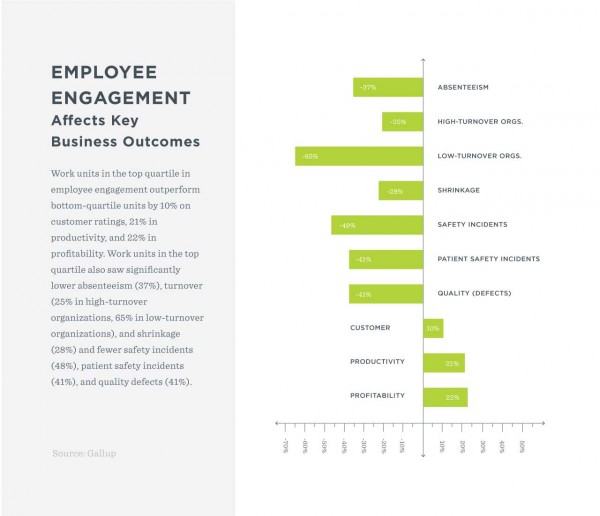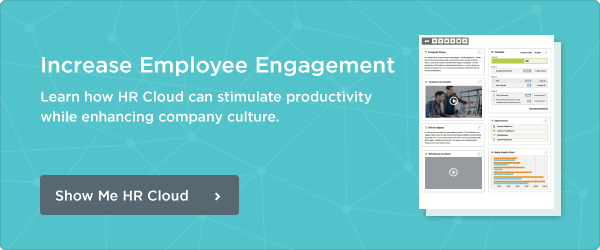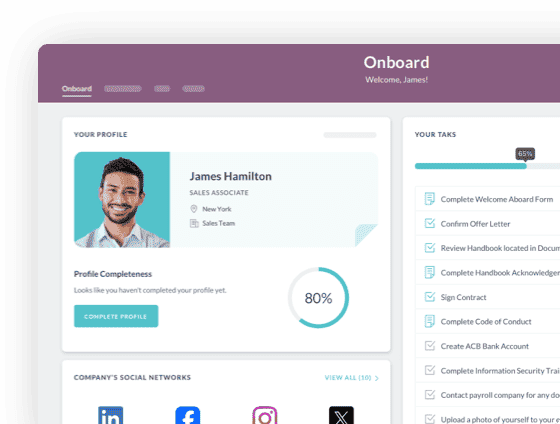
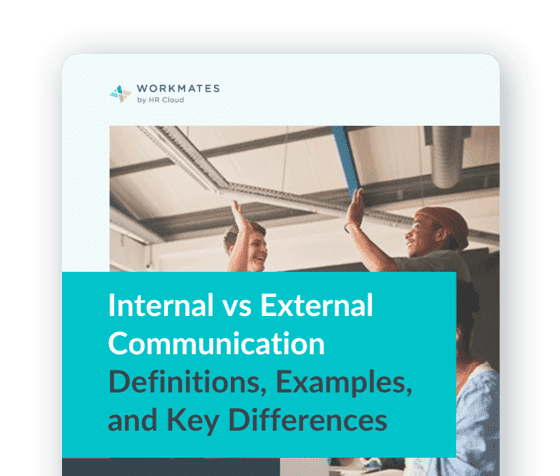
 Cut onboarding time
by 60%—here's the
Ultimate Checklist
that helped do it.
Cut onboarding time
by 60%—here's the
Ultimate Checklist
that helped do it.
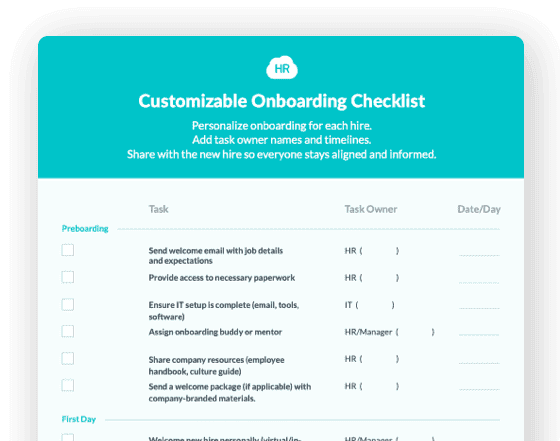
In the first post of this series, we discussed the SHRM Workplace Vision Study, the importance of employee engagement and the factors that influence engagement. In determining what helps employees feel engaged in their work, we often prepare surveys and ask people to complete them, hoping to glean information that will somehow provide insight into what’s important, what’s meaningful, and what will make a difference in our employee’s attitude and desire to perform.
But what once you’ve gathered the data, what happens next?
The Right Stuff
Are you measuring the right stuff?
First, let’s talk about what we actually want to measure. Many times organizations are unprepared as to what questions should be asked to get the data that is most important. As mentioned in the first post, sometimes we confuse happy employees with engaged employees. One does not equal the other. Be careful to only ask questions that are job related. A few sample questions might read like these, from Melcrum.com:
1. How do you feel about coming to work every morning?
2. Does your manager inspire you?
3. Do the days you do want to come into work outnumber the days you don’t want to come into work?
4. Choose five words that best describe how you feel about coming to work.
5. Do you feel proud to tell people where you work?
6. Do you have the tools to enable you to do your job effectively?
7. Do you have the opportunity to contribute to decisions that affect you?
8. Do you understand how your role contributes to achieving business outcomes?
9. Do you trust the information you receive?
10. Do you feel valued for the work you do?
Measuring the right stuff also suggests that we are aware of the performance indicators that have the largest impact on the organization’s bottom line. Those indicators become your standard of measurement.
Joseph Juran, a noted management expert stated the following in reference to the standard: “Most companies understand this to some degree, but many persist in measuring performance by the wrong standard—using unsubstantiated or ineffective metrics that ultimately lead nowhere.” He further states that the correct standards by which we should measure (and are key indicators in determining an organization’s growth) are the following:
• Earnings Per Share (EPS)
• Productivity
• Profitability
• Customer Ratings
If we measure the wrong stuff, we get the wrong data, which means we end up wasting time on the wrong strategies that miss our target—improving employee engagement and increasing productivity.
Wash, Rinse, Repeat
The first post noted that when data is gathered and analyzed, organizations must use this to impact change. While we work hard to understand engagement, if we are not consistently measuring it and acting upon the data, we will be unable to fully execute change and make adjustments to engagement.
In the 2012 Gallup Q12 employee engagement assessment, it was evident that measuring data goes beyond asking the right questions, but really understanding the story behind the data. Author Susan Sorenson for the Gallup Business Journal states the following: “It's great when companies try to improve employee engagement and even better when they measure it. Measurement is the first step companies must take before they can implement meaningful actions to improve engagement. But if they don't measure the right things in the right way, those actions won't matter—and they won't have a measurable impact on business outcomes or the bottom line.”
So, we wash, rinse, and repeat, meaning we ask the right questions, understand the story behind the data, and ask more questions to gain further clarification. Then we determine if those questions are in fact, taking us in the direction we need to go. Measure, analyze, clarify and then do it again. As we measure employee engagement data, keep in mind, this data is a measurement during one point in time. Measure again, and you may get different results based on a different environment.
Tweet: Measure employee engagement or you’ll find your org lagging behind the competition. @HRCloud
Employee engagement is so significant to the bottom line, that if not managed, you’ll find your organization lagging behind the competition. Consider the following example from the Gallup Q12 assessment, “Researchers studied the differences in performance between engaged and actively disengaged work units and found that those scoring in the top half on employee engagement nearly doubled their odds of success compared with those in the bottom half.” In fact, the data was summarized in the chart below:
Return and Report
Once you’ve summarized the data, it’s time to report on the findings—both the negative and the positive. Often, when we report on the data, we tend to focus on the negative results and work to make changes. However, it’s important to provide acknowledgement and kudos for things that are going right as well.
1. Share the feedback. Employees took the time to respond, so share the results in a timely manner. Don’t wait months for the “big reveal.” Not only will that cause frustration around the halls but you’ll find the data is growing stale by the day. Additionally, make sure to present the data in an engaging format and use various visuals, whether it's a pie chart, a graph, or a diagram.
2. Put people in charge. Many times the data gets stuck on someone’s desk because they just don’t have the time to turn it around fast enough. Elect 4 to 5 employees that will form a project team and create next steps. These employees should be seen as accountable and well-respected by their peers. Explain the purpose behind the survey and share the data.
3. Remember, this isn’t a "management thing." Ask other employees to get involved in the action. Suggest each department nominate one person to participate. They may provide guidance or other insight that may be relevant and helpful to determining direction.
4. Pick 3. Pick 3 issues and then divide and conquer. Your project team can be subdivided into smaller teams that each focus on one issue. Arrange for regular feedback and updates from everyone and ask for assistance from leadership when necessary. Good rule of thumb? Each quarter your project team should be providing updates to the entire employee population, hopefully with new action items that are able to be implemented and measured for accuracy.
There is definitely a relation between engagement, productivity, and profitability. Be sure to measure the right stuff, do it consistently, and report the findings and then take action. Your bottom line depends on it.

Keep Reading
45 Boss Day Messages That Actually Mean Something (2026 Guide)
When is Boss Day 2026? Mark your calendar for October 16, 2026 — the annual opportunity
Birthday Wishes for Coworkers: 50+ Messages That Build Workplace Connection
A coworker's birthday isn't just another calendar date—it's a meaningful opportunity to
Embracing Diversity: Recognizing Different Cultures in the Workplace
Workplaces today reflect the incredible diversity of the world around us. People bring
Like What You Hear?
We'd love to chat with you more about how HR Cloud® can support your business's HR needs. Book Your Free Demo

Build a Culture of Recognition. Boost Engagement. Guaranteed.
Workmates empowers employees to stay informed, connected, and appreciated—whether they’re on the front line, in the office, or remote. Recognition drives 12x higher engagement.Trusted by industry leaders in every sector




Cut Onboarding Costs by 60%.
Take the confusion and follow-ups out of onboarding with automated workflows, digital forms, and structured portals—so new hires ramp faster 3X quicker.Trusted by industry leaders in every sector




